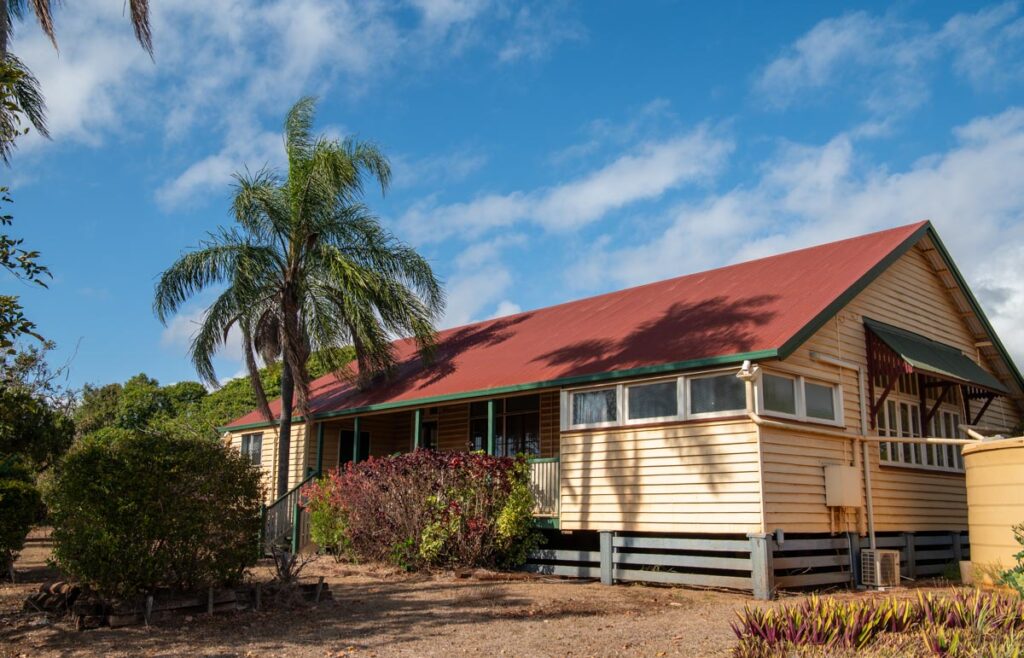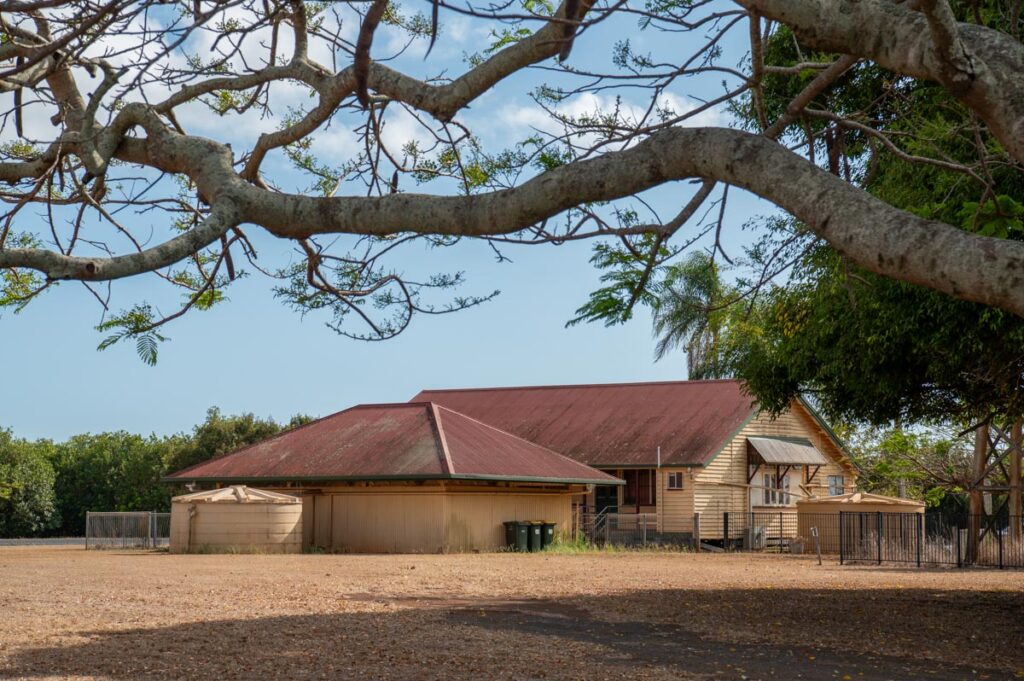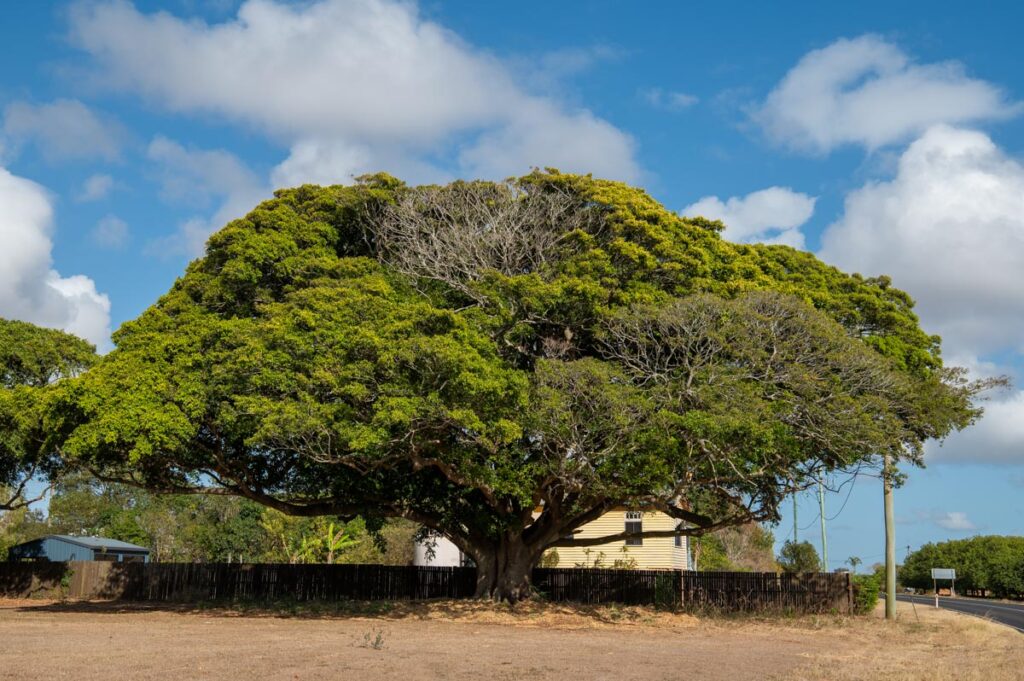
Barolin State School and shelter is a typical example of a timber school constructed at the end of the nineteenth century.
It serves as an important reminder of the development and provision of state education to rural communities throughout nineteenth and twentieth centuries, and is listed among Bundaberg Regional Council’s Local Heritage Places.
It opened as Barolin Provisional School in February 1884 after advocacy for a school in the area from leaders in the local sugar industry, Fred Nott, W N Keys and Fred Rehbein.
In 1886, the Department of Public Instruction approved the establishment of a State School.
William Starke of Gin Gin was contracted to build the school, which was ready for occupation in 1886, with the playshed shelter later erected in 1895.

As is common with many educational institutions, the Barolin State School provided a strong focal point for the surrounding community.
It was used by the district’s residents for education, meeting and public functions until its closure in February 1974.
It was later used as the site of a playgroup and a therapy centre.
Historical features
The school building is a low-set timber frame structure built in circa 1886 with concrete stumps and chamfered timber walls.
The single gable roof extends down front and rear to create sheltered verandas.
There is a timber slat balustrade on the rear verandah which incorporates a sink.
The front verandah is balustraded with palings, some of which feature cut out motifs, and the verandah has bench seating and French doors.
Large casement windows on the building’s ends have iron and timber window hoods.
The shelter building is timber framed with a hipped roof of corrugated sheet metal and an overhang supported by timber posts.
The walls are partially clad in corrugated iron, and partially in wide mesh screening.
There are numerous mature trees on the school grounds, including two large weeping figs, Camphor Laurel and pine trees.

These mature plantings create picturesque surroundings and are significant due to their age and association with the early school.
Some of the trees are believed to have been planted in observance of Arbour Day, which was first observed in Australia in 1889.
A Bundaberg Mail and Burnett Advisor article from 8 May 1893 reported eight trees were planted at the school to celebrate Arbour Day that year.
According to the Queensland War Memorial Register, the Barolin State School World War I Honour Board was moved to Elliott Heads Progress Hall after the school closed.
The three-part Honour Board lists 169 students of the school who served during WWI, including 20 who died in the conflict.





The Barolin school playgroup was immensely important to young mums in the 80’s and 90’s.
Barolin School was also the venue for Salvation Army Sunday School classes in 1960s. Classes moved to Elliott Heads later. Following classes we would proceed to the Salvation Army Citadel in Targo Street for 11am service and also Open Air meetings in Bourbong Street Saturday and Sunday evenings. My grandparents Nathaniel and Daisy Smith were both Salvation Army Officers, at Mt Perry then Bundaberg.